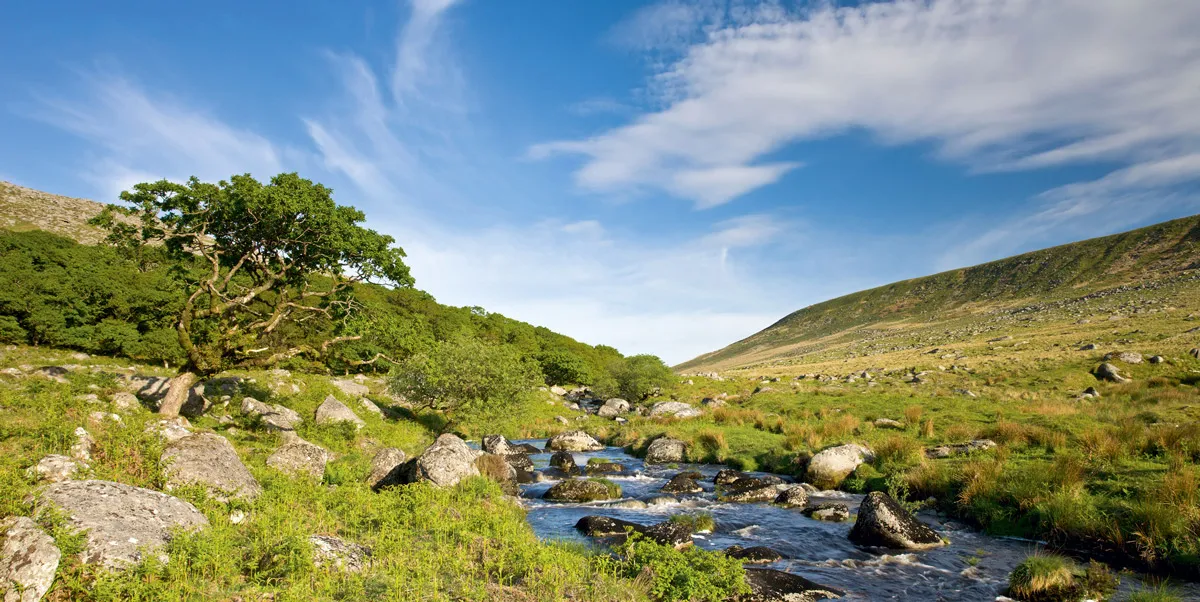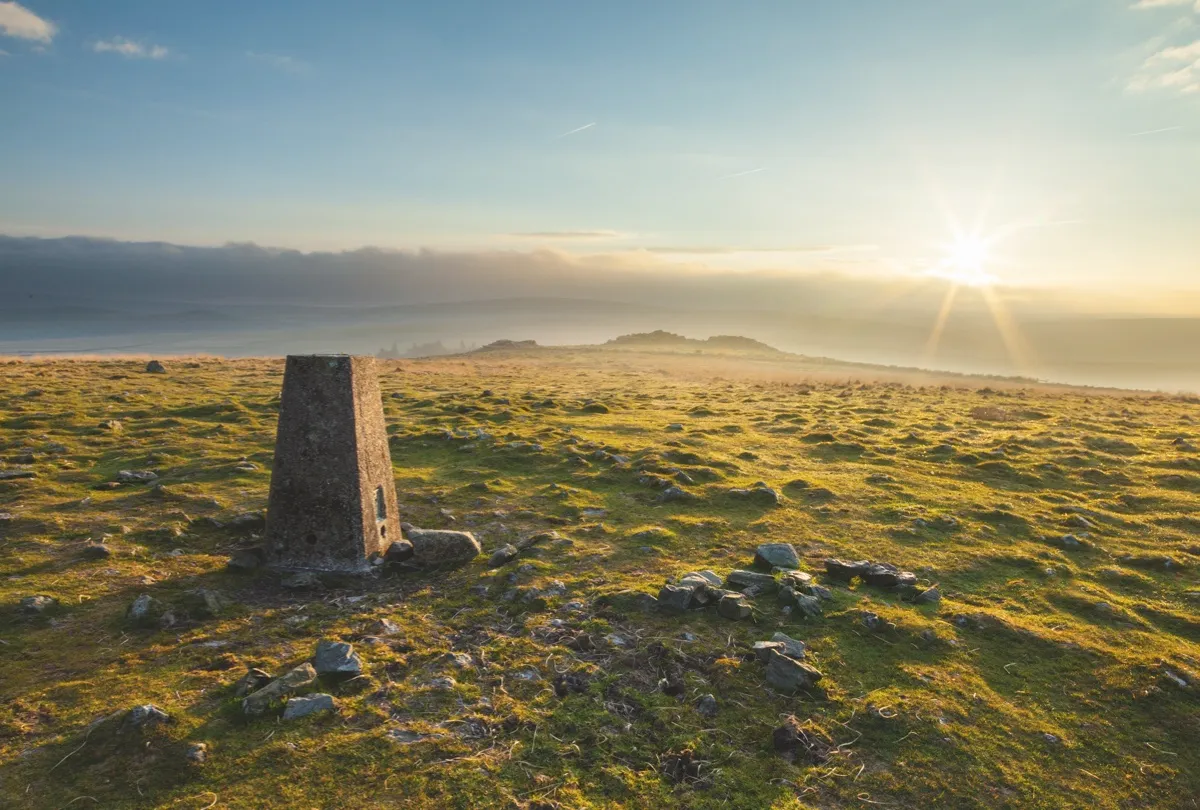The hills, moorlands and coastlines of Devon’s landscape have long provided inspiration for Britain’s authors, poets and playwrights, from Agatha Christie and Arthur Conan Doyle to Thomas Hardy and Jane Austen.
The county’s evocative countryside continues to motivate writers, not least Michael Morpurgo, author of War Horse. The 1982 children’s novel tells the story of a horse, Joey, taken from a farm in Devon to serve in the First World War, and his owner’s quest to bring him home. Unflinching descriptions of warfare and gripping plots portray the horror of battle and depths of humanity, making it a compelling read for adults and children alike. The book has been a remarkable success across the world, translated into numerous languages since its publication. Morpurgo may be best known for War Horse, but this prolific author has published many novels, including several others based in the Devon countryside – most notably Private Peaceful and War Horse’s 1997 sequel Farm Boy. The author has long-standing links to the county, particularly the small, sleepy village of Iddesleigh, which lies among undulating green valleys and bending rivers, 10 miles north of the Dartmoor National Park.

When Morpurgo and his wife Clare set up the charity Farms for City Children in 1976, the first urban kids to benefit came to Iddesleigh to stay at Nethercott House, a mansion with views of distant Dartmoor. It’s a peaceful place to spend a few hours. You approach via a maze of winding lanes through miles of green countryside that feels a continent away from the teeming Devon coast and honeypot villages of Dartmoor. Iddesleigh comprises a cluster of whitewashed cottages, a tiny church and a splendid village pub, the Duke of York. It was here that Morpurgo got the first inkling of the plot of War Horse, overhearing widows’ and veterans’ conversations from nearby tables about the war. From Iddesleigh, the Tarka Trail leads down to the idyllic River Okement, with views of Nethercott House and Parsonage Farm – the inspiration for the farm in War Horse, now styled as War Horse Valley Country Farm Park. There’s a farm trail, with rare animal breeds on show, and an exhibition on the role of horses in the First World War, in which a shocking 10 million beasts lost their lives.

Land behind the lens
Successful as Morpurgo’s novel was, the global reach of War Horse owes much to Steven Spielberg, whose 2011 film was nominated for six Oscars, including best picture. Spielberg set much of the film on Dartmoor, and there’s a fantastic walk that takes you to the farmhouse where Albert and Joey live in the movie, and to the adjacent field you see them attempting to plough. The high plateaus of the national park, enveloped in the summer months with glowing gorse blooms and deep-green bracken, are bountiful with wildlife. At lower altitudes, patches of ancient woodland are criss-crossed with rivers and arched bridges, some dating back to the 15th century. The bulk of filming took place outside the village of Sheepstor at Ditsworthy Warren House, used in Spielberg’s production as the Narracott family’s farmhouse. But be warned, those expecting to find a pretty farm cottage are in for a shock. Without production tricks, the derelict Grade II listed property is more evocative of the bleak moorland house featured in Sir Arthur Conan Doyle’s novel Hound of the Baskervilles, also set in the Devon countryside.

Pick up a map at the National Park Visitor Centre in Princetown and head out on a four-mile stroll through the hills, taking in Ditsworthy Warren House, a Bronze Age burial site, the remains of a 19th-century warrening area and majestic 360-degree views. Steven Spielberg famously said, “I have never before in my long and eclectic career been gifted with such an abundance of natural beauty as I experienced filming War Horse on Dartmoor.” On this walk, you’ll see exactly what Spielberg means.
1
Cameras rolling
The walk starts in the small unsurfaced car park west of the village of Sheepstor. The land next to the parking area was used to film scenes from War Horse. Head south uphill for half a mile, soon reaching the modest granite outcrop of Gutter Tor.

2
Tors and mires
Make a short detour south-south-west, over a stile to a concrete pillar at the top of the hill. The 350m summit is an old triangulation point. Return to Gutter Tor to take in views of the Dartmoor National Park, including the stony crest of Sheeps Tor to the north and Gutter Mire down to the east. Head south-east downhill, passing through an area of broken rock where the remnants of medieval longhouses can be found. There is also evidence of early rabbit warrening. The grassy path soon joins a hard-surfaced track, signalling your arrival to Gutter Mire. The heaped ground and large gullies that surround you mark the remains of a medieval tin-working site. Continue on the track south-east, keeping an eye out for a prehistoric burial area – now a large pile of stones – 40m from the path.
3
Centre stage
Shortly, the way reaches Ditsworthy Warren House – dressed for filming with a temporary thatched roof and window shutters. War Horse’s production designer Rick Carter said the location’s panoramic views gave “it a sense of being part of something huge and imposing – the expanse of skies, the force of the elements – and that created a beauty beyond what we had hoped for. Turn left behind the house and follow the track between Eastern Tor and Hentor Warren. The way will soon turn north-east over a small ford before ascending to the Stone Rows.
4
Prehistoric stones
This spine-like line of stones, along with burial monuments and hut circles, forms the Drizzlecombe complex, one of the best Bronze Age sites in Dartmoor. Continue uphill on a faint grassy path to Higher Hartor Tor.
5
And cut
At 418m, this is the highest point on the route. On a clear day, views stretch out across the Plym Valley to the west. From here, head north-west to the Eylesbarrow tin mine. The remains of the site are early 19th-century, though the area has been worked for tin for much longer. Turn left and follow the stony track south-west, back to the Royal Navy’s Gutter Tor Refuge and the start of the walk.
Map
Click on the map below for an interactive version of the route.

Photos: Neville Stanikk, Alamy

